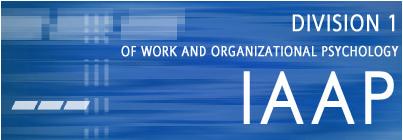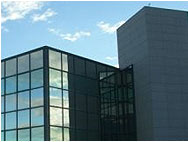Identity of Division 1 in a globalized world
As it is described in the web page of our Association, the International Association of Applied Psychology is the oldest international association of psychologists. Founded in 1920, their members come from more than 80 countries. Its mission is succinctly stated in Article 1 of its Constitution: "...to promote the science and practice of applied psychology and to facilitate interaction and communication about applied psychology around the world”. This can also be predicated of our Division, the largest one in our Association. The world of work and the one of the organizations is specially influenced by the globalization of the economy, the markets and the society. Nowadays, even for those who act in local context the global influence is present and noticeable.
In this context, our Division, and IAAP in general, can support and advance the science and practice of organizational psychology in the global world, and to expand its scope of application and contribution to society to improve the quality of working life. In fact, our contribution may be specially important because even if, in quantitative terms, the number of our members is not the largest one, our membership is specially qualified to make relevant contributions because its cultural diversity and national richness. IAAP, Division 1 has a membership coming from a broad array of countries with very different traditions, and is present in the five continents. Moreover, members from the different countries are researchers, academics and professionals specially keen and interested in international issues and are especially oriented to develop links and get knowledgeable about what is going on in the international context.
We need to take advantage from this, and we need to create the platforms where this potential of social capital becomes social capital in use. The contribution of every member of our Association may be relevant in the global context. Different perspectives are needed to deal with globalization. Gestalt psychologists were right when they emphasized that the whole is something else than the sum of its parts, but this can not be taken as a statement against the relevance of every part.
In his masterpiece work “Invisible Cities”, Italo Calvino describe a passage where Marco Polo converses with the emperor Kublai Kahn: “Marco Polo describes a bridge stone by stone. ‘But which is the stone that supports the bridge?’ Kublai Kahn asks. ‘The bridge is not supported by one stone or another’, Marco answers, ‘but by the line of the arch that they form’. Kublai Kahn remains silent reflecting. Then he adds: ‘Why do you speak to me of the stones? It is only the arch that matters to me’. Polo answers: ‘Without stones there is no arch’ ”.
This is a clear metaphor that can apply to show the strength of our Division and Association. The great diversity of its membership offers an excellent curvature in which the richness of views, potential contributions and the approaches to relevant issues for our science and profession are now of more value than ever. Not one stone, not one view, not one perspective, not one group (even if it is an important and powerful one) can produce the curvature. Without a diversity of stones and a proper alignment which respects the different forms of the stones there is no proper curvature and there will be no strong nor reliable bridges.
In order to understand and contribute to the relevant issues of work and organization, our Division 1, with a membership of scientists, academics and professionals from every continent, a large array of countries and a great diversity of cultures, represents an excellent source of inspiration and an important asset to contribute to the proper and rich understanding of the glo-cal society. Exchange of ideas, cooperation, interaction, tolerance and openness to the others views and approaches will generate a bridge with wonderful arches that will unite several sides and generate synergies based on the respect of the values and contributions of everyone. Only in this integrative way and in the respect for others’ contributions it will be possible to have a bridge with a curvature that is at the same time strong and beautiful.
I hope you all share with me that contributing to the cooperation of the development of our science and professions with all the richness available in the different countries and cultures is an important opportunity. So, we need platforms, and spaces of fruitful interaction and cooperation. This is one of the most challenging and interesting opportunities for our profession and our discipline during the time we are living.




